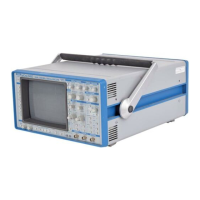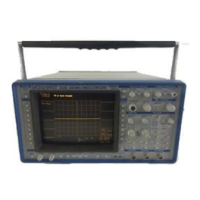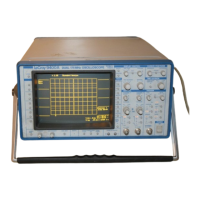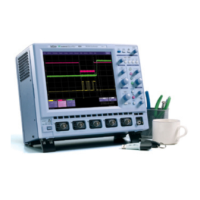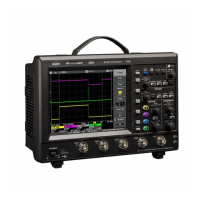10–6
Zoom, Mathematics and Math Setup
Using Waveform Mathematics
Waveform mathematics can be applied to any channel or
reference memory. And any trace of A, B, C or D can be set
up as a math function, allowing several computations to be
made in sequence.
For example: Trace A could be set up as the difference between
Channels 1 and 2; Trace B defined as the average of A, and
Trace C made the integral of B — thus displaying the integral of
the averaged difference between Channels 1 and 2.
In order to avoid slowing down the instrument with unwanted
computations, a particular mathematical function is only
computed when its display is turned on. However, using the
same example as above, it would be sufficient to display Trace
C alone, as the instrument knows it must compute A and B as
intermediate steps to C.
Waveform processing can also take time when many data
points are involved. This delay can be cut by limiting the number
of data points used in the computation. To do this, the
instrument will process the entire waveform by taking every Nth
point, where N depends on the timebase and the desired
maximum number of points, and the first point taken is always
the data value at the left-hand edge of the screen.
Combining Channels Zoom and math functions on Traces A, B, C, D and Reference
Memories M1, M2, M3, M4 use the instrument’s system memory,
which is dynamically allocated to each trace as required. When
more acquisition memory is achieved by combining channels, a
single long trace can consume all the reference memory or zoom
and math trace capacity in the instrument. When this happens, an
on-screen warning message will avert accidental storing of a new
trace to a reference memory already in use.
Note: A processing title for each displayed trace will be
shown in the Displayed Trace Label. If the title is missing,
the desired processing cannot be done and the contents
of the trace remain unchanged.
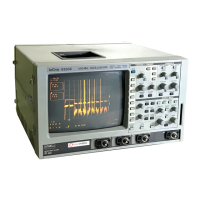
